These flower number games are inspired by spring. You can adapt them for different aged children, and use them for both math games and letter activities. Here’s how to play.
Flower number games
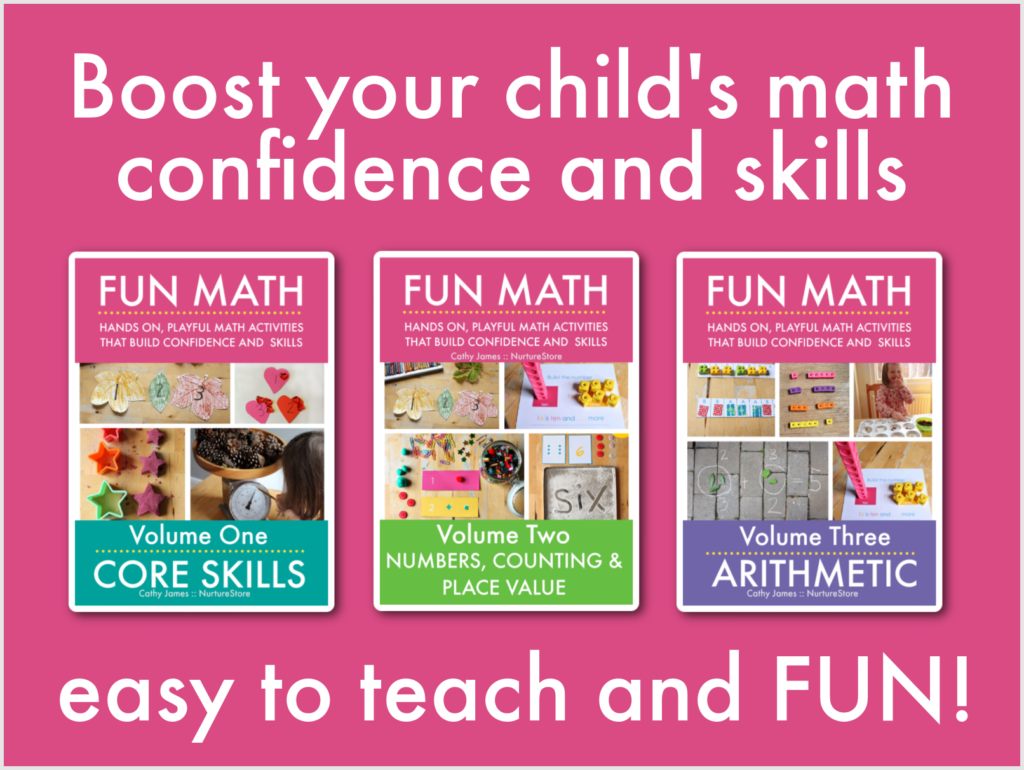
Magic Fun Math lessons!
Fun Math is an easy to teach, highly effective math curriculum based on play and hands-on learning.
All the lessons are designed to be fun and memorable, so children enjoy their lessons and feel confident.
The lessons are easy for teachers and parents to use, in class or at home.
These are the magic lessons where children really see, understand, and can apply math concepts. They are especially suited to children who don’t like math, lack confidence, don’t understand math the way they are currently being taught, or just want to play.
SEE MORE AND TRANSFORM YOUR MATH TEACHING HERE.
These flower games give you a framework to practise many different math facts over time, and my children find them much more fun than answering the same questions on a worksheet. I love that the whole thing looks so pretty, so we get some lovely spring art in our room, which encourages us to use the activity often.
To set up our flower number games we first painted some blooms. We used watercolour paint, painting big, layered circles, but really any kind of flower you like will do.
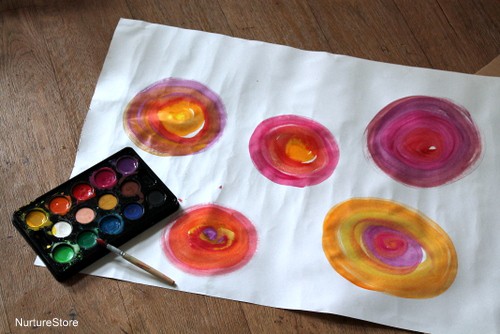
We also painted some green stalks, and fastened both the stalks and flowers to our wall with white tack. I wrote a number in the centre of each flower, as we’re using ours for some addition and subtraction games, but you could also write in letters. See below for lots of different ways to play.
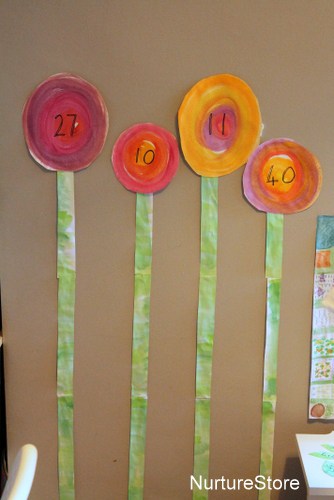
Next, we cut out some leaf shapes. We’re using a marker pen to write sums on our leaves, but, again, you could also play with letters.
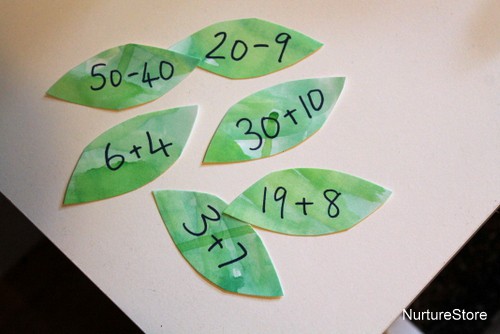
The aim of our game is to:
1. Pick a leaf and read the question written on it.
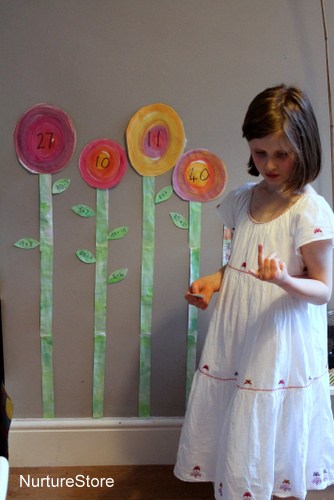
2. Work out the answer. Using fingers or number lines/squares is encouraged. We’re focusing on which strategies you can use to work out the answer, playing with number patterns and shortcuts. {so for example, if we had 10+9 we might quickly work out 10+10, which we know without really having to think about it, and then take away one – rather than counting on nine from ten which takes us longer and risks missing a number while we do it}
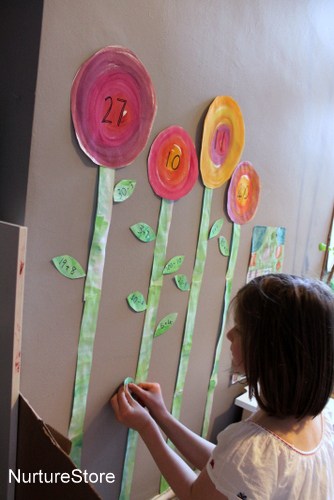
3. Match your leaf to the right flower stalk. All the sums we have equal one of the numbers in our flower blooms, so we can match them all up and grow tall, tall maths flowers all spring and summer long.
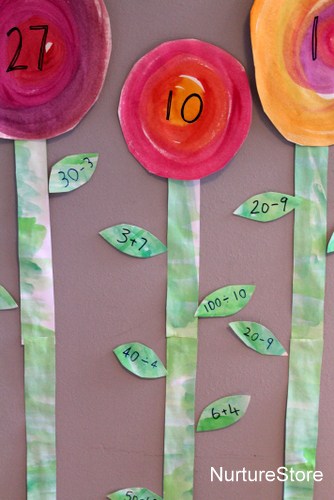
Different ways to play: numbers and letters
You can adapt this flower maths activity to suit lots of different stages, and you can have siblings of different ages playing along together.
For beginners you could write the numbers 1, 2 and 3 in your flowers. On your leaves, write the same 1, 2, 3 numbers and see if they can recognise each one and match it to its flower.
You could also write the words one, two and three and see if the can match these to the correct stalk. Or draw one dot, two dots, threes dots, or use tally marks.
We’re doing lots of addition and subtraction practise, but you can use it for times tables too – just make different sets of leaves to work on the different maths facts.
Children of different ages can play together. Younger children might use a number line or hundred square to help work out their answers, older children might work on the speed of their mental maths and see how fast they can correctly place 10 or 20 leaves.
A good way to make the game more challenging is to start with the answers and have your child think of the questions. So, if the flower says 27 they have to think of lots of sums that result in the answer 27. Have them write their sums on leaves and place them on the stalks – or make a basket full of them, so other children can pick one of their questions leaves. This gives you a perpetual game that the children create and play between themselves.
You can also switch to letters. Write your child’s name, with one letter in each flower. Then have a set of leaves with lots of letters on for them to match to the right stalk.
You could have upper case and lower case letters to match – a whole alphabet of the flowers would look amazing along the wall!
You could have lots of words on the leaves that start with matching letters. So, write b and d on two separate flowers and have the children sort leaves with bed, dog, big, dig, ball, drum written on them.
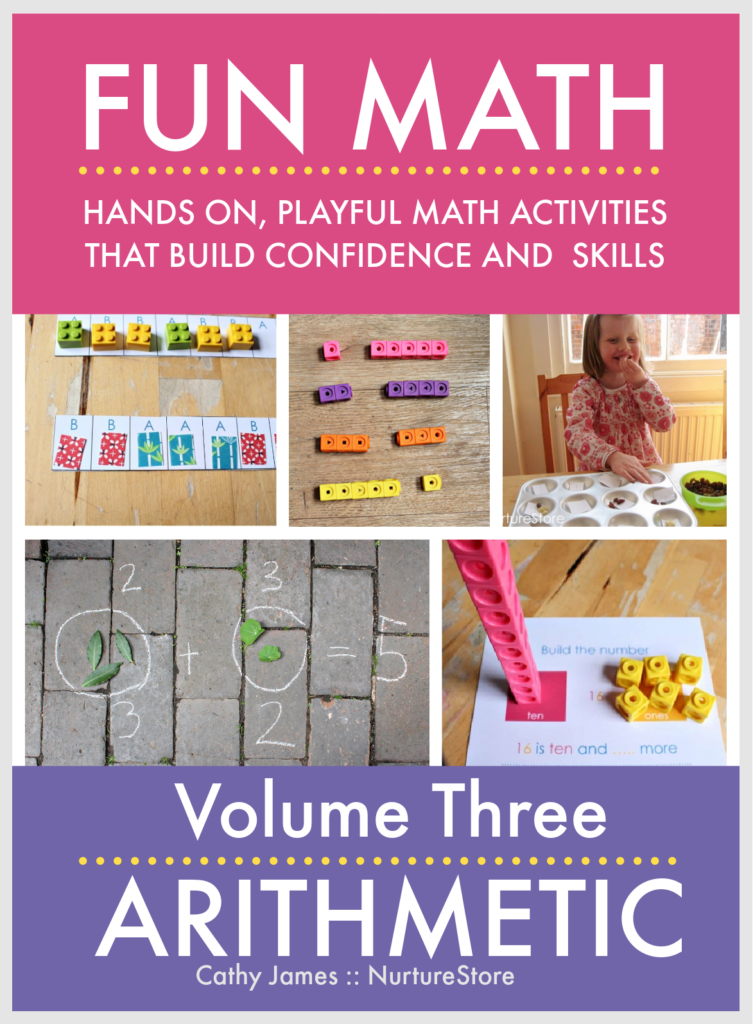
Transform your teaching with Fun Math
The Fun Math series gives you a math curriculum that is easy to teach and highly effective.
Children love these lessons because they are engaging and fun.
You'll have a clear set of ready-made math lessons and activities that are simple to lead using our step-by-step lesson guides, and which children really understand.
Be the best math teacher and boost your children's confidence and skills with Fun Math.
See more and transform your teaching here.
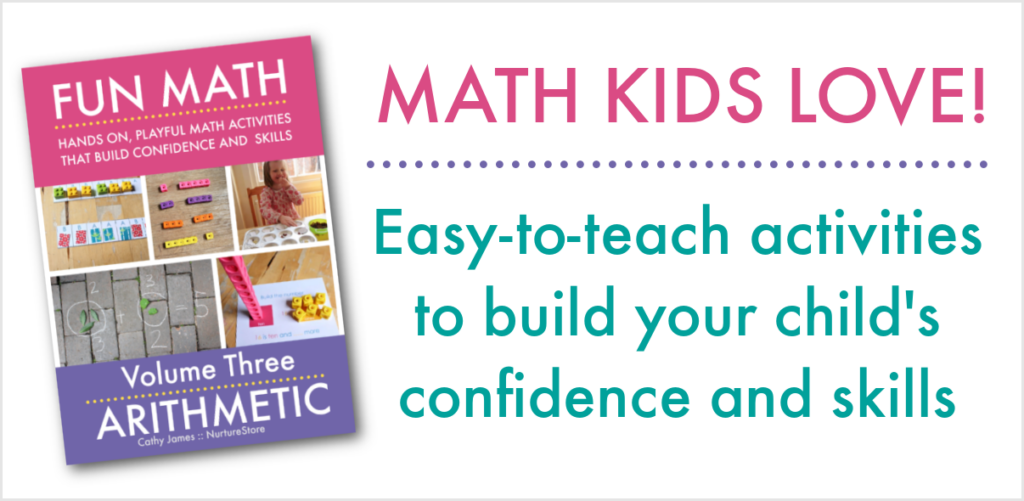


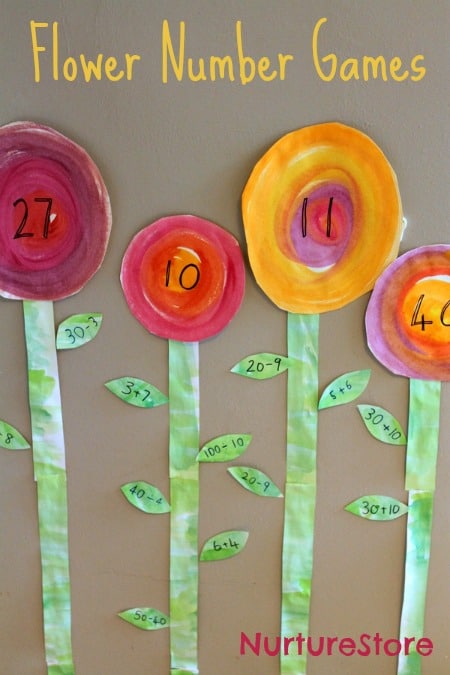
I really love this idea! I have pinned this post!
Great game! I will use it with my kids in senior kindergarten next year. But, over the summer I will use it to practice multiplication with my daughter…it’s going to be a ton of fun! Thanks for the ideas…:-)
Debb
could you please participate in Sharjah International Book Fair in kids activities section
Thank you for the invitation Fatima, but I am in the UK so will have to decline.